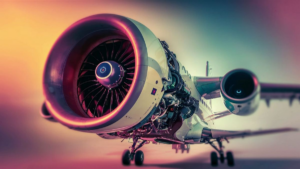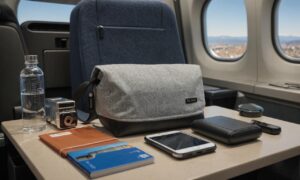Traveling by plane can be an exciting adventure, whether you’re jetting off to a new destination or heading home to visit loved ones. However, navigating airport security regulations can sometimes be a daunting task. One common question that travelers often ask is, “How many ounces can you take on a plane?” Let’s delve into this topic to provide clarity and ensure your journey through security is smooth and hassle-free.
Understanding TSA Regulations
The Transportation Security Administration (TSA) sets guidelines for what items are allowed in carry-on luggage and how they should be packed. These regulations are designed to ensure the safety and security of all passengers aboard a flight.
Liquid Limitations
One of the most well-known TSA regulations is the 3-1-1 rule for liquids, gels, and aerosols. According to this rule, each passenger is allowed to bring containers of liquids, gels, and aerosols in carry-on luggage, each containing 3.4 ounces (100 milliliters) or less. These containers must be placed in a single quart-sized, clear, plastic, zip-top bag, with one bag per passenger.
Exceptions to the Rule
While the 3-1-1 rule is standard, there are some exceptions for certain items. These exceptions include medications, baby formula, breast milk, and liquid or gel-based items for medical reasons. These items are typically allowed in larger quantities, but they may be subject to additional screening.
Packaging and Screening
When packing liquids, gels, and aerosols in your carry-on luggage, it’s essential to ensure that they are properly packaged to comply with TSA regulations. All containers must be sealed and placed in the designated clear plastic bag for easy inspection during the security screening process.
Security Screening Process
During the security screening process, TSA officers will conduct a thorough inspection of your carry-on luggage, including any containers of liquids, gels, or aerosols. Be prepared to remove the clear plastic bag containing these items and place it in a bin for X-ray screening.
Additional Considerations
While the TSA sets guidelines for what items are allowed in carry-on luggage, it’s essential to check with your airline for any additional restrictions or requirements they may have. Some airlines may have stricter policies regarding the amount of liquids, gels, and aerosols allowed in carry-on luggage.
Understanding how many ounces you can take on a plane is essential for smooth travel through airport security. By familiarizing yourself with TSA regulations and properly packing your liquids, gels, and aerosols, you can ensure a stress-free journey to your destination. Remember to check with your airline for any additional requirements, and always comply with TSA guidelines to expedite the security screening process.
Frequently Asked Questions
Here are some commonly asked questions regarding carrying items on planes:
- Can I Bring Perfume or Cologne? – Perfume or cologne falls under the category of liquids, so the 3-1-1 rule applies. Ensure that the container is 3.4 ounces (100 milliliters) or less and placed in the designated plastic bag.
- What About Duty-Free Purchases? – Duty-free liquids purchased within the secure area of the airport are generally allowed on the plane. However, it’s wise to check with TSA or your airline for any specific instructions.
- Are Solid Fragrances Allowed? – Solid fragrances, such as solid perfume or cologne sticks, are not subject to the 3-1-1 rule and can typically be packed in carry-on luggage without any size restrictions. However, it’s always recommended to check with the airline for confirmation.
Packaging and Screening
Ensuring that your items are appropriately packaged and ready for screening is crucial for a smooth airport experience:
- Proper Packaging – Remember to seal all containers and place them in the designated clear plastic bag for easy inspection during the security screening process.
- Accessible Placement – Keep the clear plastic bag containing liquids, gels, and aerosols in an accessible part of your carry-on luggage to facilitate the security check.
Additional Considerations
Aside from TSA regulations, there are other factors to consider when packing for air travel:
- Airline Policies – Different airlines may have varying rules regarding carry-on items, so it’s essential to check their specific policies before heading to the airport.
- International Travel – When flying internationally, be aware that other countries may have their own security regulations and restrictions on carry-on items. Researching these beforehand can prevent issues at the airport.
Conclusion
Traveling by plane can be stress-free when you’re familiar with the regulations and adequately prepare your carry-on items. By understanding TSA guidelines, properly packaging your liquids, and considering additional factors like airline policies and international travel rules, you can ensure a smooth journey from check-in to landing.
See also:






